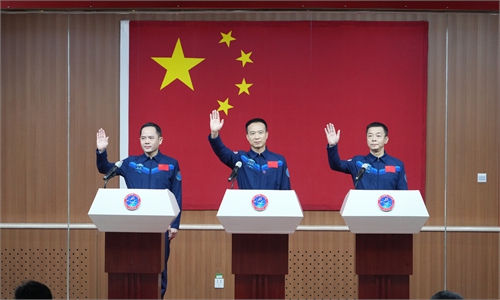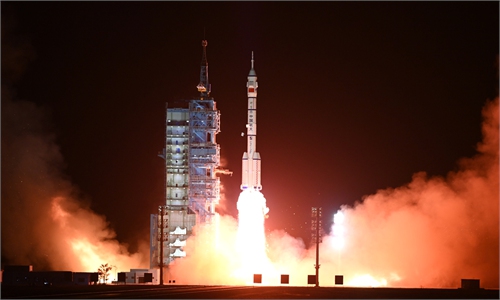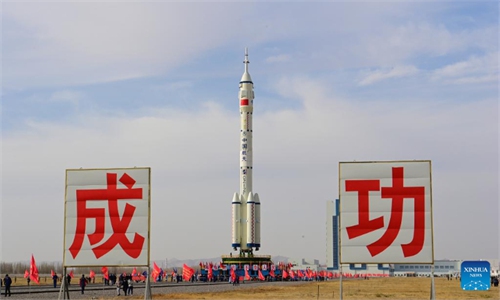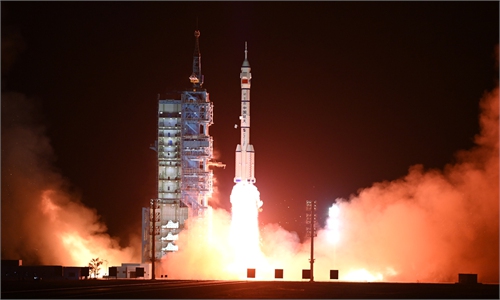Historic meeting in Tiangong belongs to China and the world: Global Times editorial
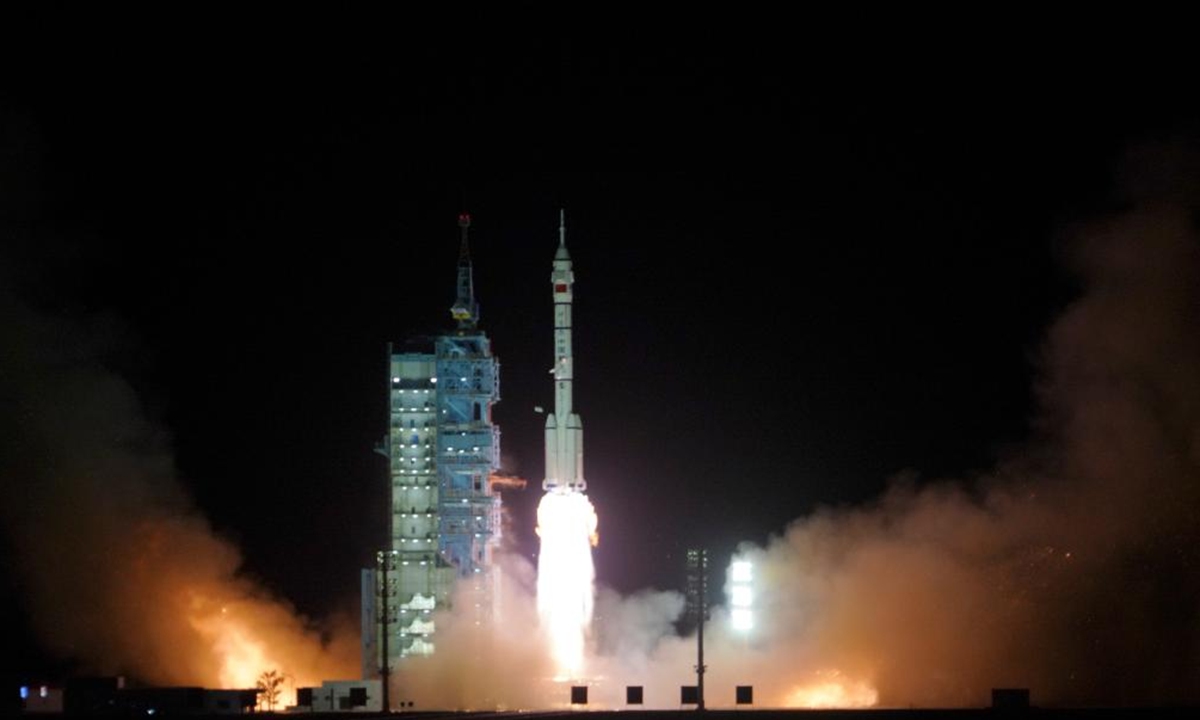
The manned spaceship Shenzhou-15, atop the Long March-2F Y15 carrier rocket, blasts off from the Jiuquan Satellite Launch Center in northwest China, Nov. 29, 2022. (Xinhua/Li Gang)
At 7:33 am (Beijing Time) on November 30, taikonauts of Shenzhou 14 and Shenzhou 15 spacecraft successfully "joined forces" in China's Tiangong Space Station. This historic meeting marks that the Chinese space station has stepped into the application and development stage. The two groups of taikonauts can then rotate in orbit, and the space station will be manned in orbit in the long run. Photos of the six astronauts embracing in space, as well as the blessings of "Long Live the Motherland" from netizens, swept the screen early in the day. It also shows China has become a veritable space power in the world.
International media outlets have paid great attention to this remarkable achievement of China's aerospace industry. They specifically mentioned two landmark events: First, in the early 1960s, both the Soviet Union and the US achieved astronaut spaceflight. At that time, Chairman Mao Zedong said, "How can China be regarded as a powerful country? We can't even send a single potato into space." Second, in 2011, the US passed the "Wolf Amendment," which prohibited NASA and other agencies from using government funds to engage in cooperation with the Chinese government and China-affiliated organizations, in practice excluding China from the International Space Station. The low starting point of China's space industry, the great difficulties and obstacles it encountered, and the rapid progress and outstanding achievements it made in just a few decades have left a huge exclamation mark to any witness.
From Dongfanghong satellites, Long March rockets, Chang'e lunar probes to Tiangong Space Station, every step of China's aerospace industry has been down-to-earth, and it has brought us a lot of inspiration. Aerospace is a major national project, and it cannot be accomplished without the centralized and unified leadership of the Communist Party of China Central Committee and the new system for mobilizing the resources nationwide. Over the years, despite various challenges, China has always insisted on taking the road of self-reliance and arduous innovation in the aerospace field. Today, the country is able to independently control its own destiny, and has made breakthroughs in a large number of core technologies with its own intellectual property rights. All core components are 100 percent homemade. Adhering to the path of independent innovation has been proved right in practice, which in turn has strengthened our determination to stick to independent innovation. Chinese aerospace will continue to obtain massive positive feedback in such a virtuous circle.
The foundation of China's aerospace industry is so solid that it makes some people feel uneasy. Before the launch of the Shenzhou-15 spacecraft, Nina Armagno, the head of the US military's space wing, said that China poses increasing "threats" in military space race. NASA administrator Bill Nelson also said earlier that he supported making the "Wolf Amendment" permanent and the decision not to allow China to participate in the research project of the International Space Station. The US has always regarded space as the "fourth frontier" following sea, land and air, and the US believes it must maintain an absolute leading position in this frontier, which should not be challenged by others. But what has the US done to maintain its advantage over the years?
What we have seen is the US has placed many labels on China, ranging from accusing China of "stealing American technology" in the space field, to comparing China's development to the "attack on Pearl Harbor" on the US. While the Chinese are busy building spacecraft, Washington is racking its brains to coin defaming phrases. The US is also attempting to take to space these tricks it uses on the ground. Whether using the "Wolf Amendment" to engage in "decoupling," or getting together other countries to form a "Little NATO on the Moon," when the human exploration of outer space has made only a small step forward, Americans are thinking about playing "Star Wars." These words and deeds, like space junk, hinder international cooperation and human progress.
China's current achievements in space are to some extent forced out by the US. In the past, China continued to explore and innovate in technology, not following the old path taken by the US; in the future, the door of China's Tiangong is wide open, and it will not follow the evil path of the US. China has already announced that its space station is the first project of its kind that is open to all UN members. So far, scientific experiment projects from 17 countries including Switzerland, Poland, Germany and Italy have been included in the selected projects of China Space Station. The development of aerospace cannot work behind closed doors, still less by a single country. Outer space is the common domain of all humankind, and space exploration is the common cause of human beings. In the future, there will not only be Chinese faces on Tiangong, but also faces of astronauts and scientists from all over the world. Tiangong, as the "station in space," belongs to both China as well as the entire human race.
By 2030, the US-led International Space Station will have to face decommissioning, and Tiangong will become the only space station for human beings. It has been asked whether the US should or could be on Tiangong at that time. American public opinion expressed anxiety about this. That question is for Washington to answer. What we want to say is that China's journey is to explore the ocean and space, and the development of human beings requires win-win cooperation.
